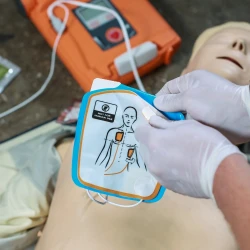The opioid epidemic is an ongoing crisis that has swept across the United States, affecting individuals, families, and communities. From rural areas to big cities, the scourge of opioid misuse has left no community untouched, challenging public health agencies and medical professionals. This article aims to unpack the current state of the opioid crisis by examining the statistics, factors contributing to its spread, and its impacts on society.
What Are Opioids?
Opioids are a class of drugs that include prescription pain relievers such as oxycodone, hydrocodone, and morphine, as well as illicit substances like heroin and synthetic opioids like fentanyl. Initially, these drugs were intended for short-term pain relief following surgical procedures or injury, but they quickly became over-prescribed and misused.
The Start of the Epidemic
The roots of the opioid epidemic can be traced back to the late 1990s when pharmaceutical companies reassured medical professionals that prescription opioid pain relievers were not addictive. This led to a spike in prescriptions, which then opened the door to widespread misuse.
The Statistics
- Over 130 people die every day from opioid-related drug overdoses in the U.S.
- Approximately 10.1 million people misused prescription opioids in 2019.
- In 2019, nearly 50,000 Americans died from opioid-involved overdoses.
Demographics and Geographic Spread
While the epidemic affects people of all backgrounds, certain demographics are at higher risk. Young adults, veterans, and people with lower socio-economic status often face elevated risks. The crisis is not limited to urban areas; rural communities have been hit particularly hard due to limited access to healthcare and addiction treatment services.
The Economic Impact
The opioid crisis has had a profound economic impact. From healthcare costs to lost productivity and criminal justice expenditures, the epidemic is estimated to have cost the U.S. economy more than $78 billion annually.
Addressing the Crisis
Combatting the opioid epidemic requires a multi-faceted approach, including:
- Improved Prescription Practices: Stricter regulations on opioid prescriptions.
- Public Awareness: Educational campaigns to raise awareness.
- Access to Treatment: Increased funding for opioid addiction treatments.
- Naloxone Accessibility: Making the opioid overdose reversal drug, naloxone, more widely available.
Conclusion
Understanding the scale and scope of the opioid epidemic is essential for tackling the crisis effectively. By acknowledging the complexities involved, from the systemic flaws in healthcare to the socio-economic factors that exacerbate the problem, we can begin to formulate a more comprehensive response.




